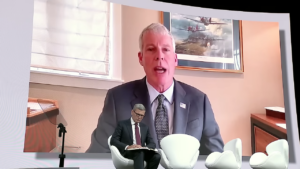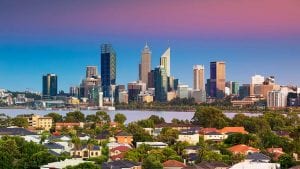Western Australia remains one of the few Australian states seemingly in lock-step with the federal government on renewable energy and climate ambition, but a new study has found the state could transition its south-west grid to 100 per cent renewables by 2030 for cheaper than business-as-usual.
In a report called Energy 2030, the WA Greens modelled two scenarios for the South West Interconnected System (SWIS), which found it was technically possible to achieve a 100 per cent renewably-powered grid through a mix of solar PV, wind, solar thermal, biomass and battery storage without raising the cost of power bills.

The study found it would also be cheaper for the state to make this transition by 2030 – that is, adding around 500MW of new renewable capacity to the grid each year – than to continue with business as usual, with the addition of a carbon price of $30/tCo2 and with surplus generation sold at $30/MWh.
The research also finds that move to 100 per cent renewables would create 151,000 – 156,000 jobs to 2030 or about 12,000 new jobs a year.
The findings comes at an interesting time, politically, as the federal Coalition intensifies its campaign against ambitious state renewable energy targets, and as Western Australians head to the polls in March.
Greens Senator for WA Scott Ludlam says his party’s report has exposed the Liberal Barnett government’s “comprehensive failure” to tackle climate change, and to plan the state’s transition to renewable energy – currently renewables provide only 9 per cent of the state’s electricity.
“This state has suffered under a serious lack of leadership on renewable energy, starting with (WA Premier Colin) Barnett scrapping the Climate Change Unit in 2013,” Ludlam said.
“In his time we have seen the commencement of the Pluto and Gorgon LNG hubs adding a further 10 million tones of carbon into the air, which is in contravention to the Paris Agreement.
“That’s why we will call on whoever wins the election to establish a new government authority called Renew Western Australia, to get us back on track.”
WA Labor leader Mark McGowan has campaigned relatively strongly on renewables, recently revealing his party’s plan to power the major city of Albany on 100 per cent solar, wind and wave energy.
The announcement included about $112 million worth of commitments, including plans to take $19.5 million already budgeted for the now shelved Bunbury to Albany gas pipeline project and put it into a local wave energy project, most likely by local outfit Carnegie Clean Energy.
McGowan has also spoken often of his plan to keep Western Power publicly-owned and to create more jobs.

WA Greens candidate Tim Clifford says his party’s new research shows that targeting 100 per cent renewables by 2030 would create 156,000 jobs in the industry, through construction, installation and ongoing maintenance.
“Our modeling found that 12,000 jobs would be created each year, to build the infrastructure needed and provide ongoing maintenance to deliver 100 per cent renewable energy until 2030.
“This is higher than the number of people employed at the height of WA’s mining boom of 127,221 including construction, extraction, exploration, operations, administration and maintenance.”
A key part of the Greens’ Energy 2030 plan is to establish a new government authority called Renew Western Australia to drive the transition to 100 per cent renewables, responsible for planning and leveraging $500 million of investment into construction of new energy generation over the next four years.
It would also set up a $100 million Clean Energy Transition Fund to support coal and other fossil fuel energy workers with the transition, with $6.6 million a year to go to direct training and reskilling programs and investment for new businesses.
A staged fossil fuel Phase out Plan would also be established, based on new state based emissions and pollution intensity standards, to enable the orderly and stable closure of the state’s dirtiest coal and gas-fired power stations, and a fair transition for all.









